An incident is an event that results in or causes injury or damage to someone or something, or an event that has the potential to result in or cause injury or damage. The University responds differently to different types of incidents.
Use the Index Below to Navigate Throughout This Page
WHICH INCIDENTS ARE REPORTABLE?
![]()
ALL incidents must be reported.
Unsure? Contact:
Leticia Martinez (all employee related incidents), Tel. (805) 893-4440, email: leticiamartinez@ucsb.edu
Ron Betancourt, ARM (all non-employee related incidents), Tel. (805) 893-5837, email: ron.betancourt@ucsb.edu
REPORT RIGHT AWAY:
![]()
- Fatality
- Inpatient hospitalization
- Loss of any body part (e.g., fingertip)
- Serious injury (medical treatment beyond first aid)
REPORT WITHIN 24 HOURS:
![]()
Any other types of incidents (examples below):
- Any other type of bodily injuries regardless of severity
- Needle stick injuries and cuts from sharp objects that are contaminated with another person's blood or other potentially infectious material
- Loss of consciousness
- Incidents which disrupt the normal work process
- Use of any safety equipment: emergency eyewash or shower, fire extinguisher, spill kits, first aid kits, satellite communicators (SOS button)
- Hazardous chemical exposure
- Large hazardous chemical spills (more than 1 L )
- Fire
- Event during which property damage or disruption of facility operations occurred
- Near miss
- Behavioral problems, emotional unwellness, distress
- Any unsafe conditions, hazards.
How to Report an Injury or Illness?
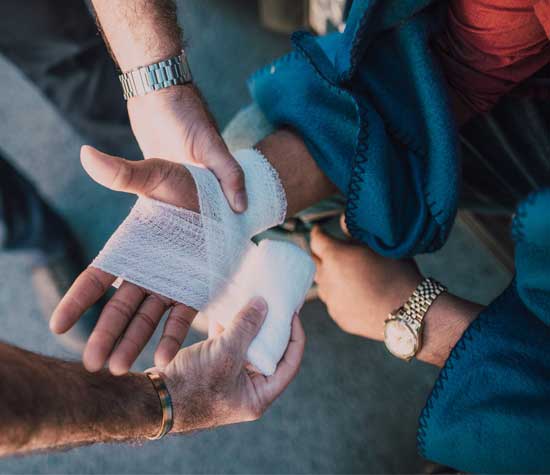
To report an injury or illness, chemical exposure to employees, UC payroll graduate students and approved volunteers:
Use the Employee Injury & Illness Reporting App
Incidents, injuries or illnesses to employed researchers (e.g. post docs, payed graduate students, other research staff, etc.) and approved volunteers fall under the UCSB Workers’ Compensation Program. Workers’ Compensation is a state mandated insurance plan that provides assistance to all workers who are injured as a result of their employment or who develop job related illness. It is important to note, however, that all work related incidents should be reported regardless of severity (see above “any other type of incidents”).
More details listed on the Workers' Compensation website
With questions contact:
Leticia Martinez
Claims Assistant
Tel. (805) 893-4440
Email: leticiamartinez@ucsb.edu
To report injury and illness to anyone else:
Injuries and illnesses involving individuals who are not covered under workers comp are managed by the Risk Management Office.
Fill out the Notice of Incident form. Submit to:
Ron Betancourt, ARM
tel. (805) 893-5837
fax (805) 893-8521
email: ron.betancourt@ucsb.edu
The individual involved in the incident can open a claim.
With any questions contact:
Ron Betancourt, ARM
Tel. (805) 893-5837
email: ron.betancourt@ucsb.edu
To Report Incidents Other Than Injury and Illness

Fill out the Notice of Incident
Submit to:
Ron Betancourt, ARM
tel. (805) 893-5837
fax (805) 893-8521
email: ron.betancourt@ucsb.edu
Medical Assistance
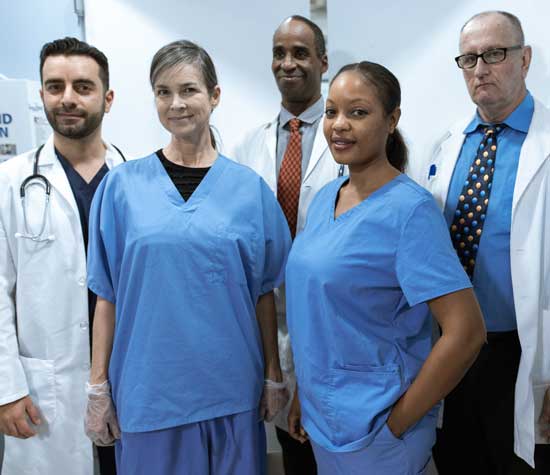
For Local Medical Treatment:
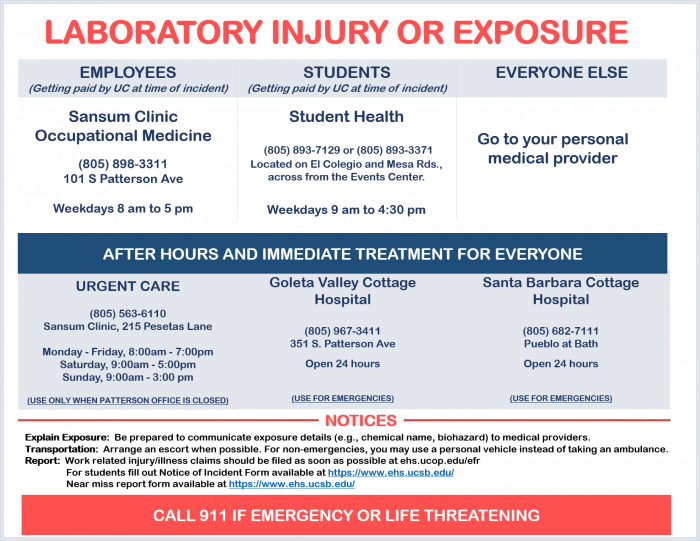
If the situation is threatening to life or limb, emergency medical care should be sought immediately.
Call 911 for paramedic assistance.
If poisoning is suspected, contact the Poison Control Center at (800) 222-1222.
For Medical Treatment during Travel:
Go to the nearest ER
To Report a Near-Miss
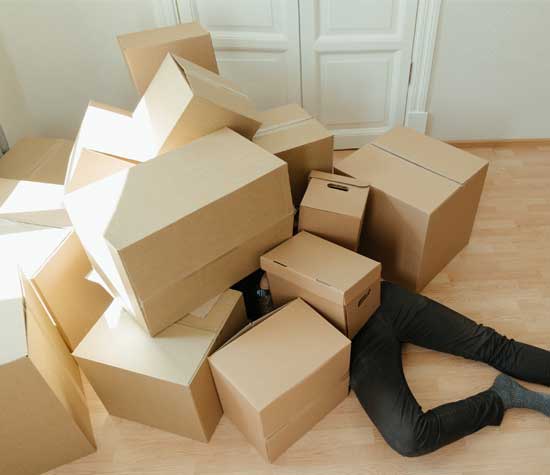
Use the active button “Near Miss” at the upper right corner of this page.
OSHA defines a near miss as “an unplanned event that did not result in injury, illness or damage – but had the potential to do so.” A near miss is also referred to as a “close call" or "good catch.”
To Report Behavior Problems and Other Hazards
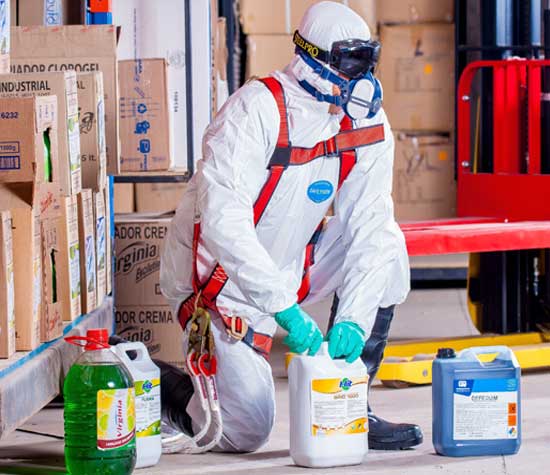
Chemical Incidents
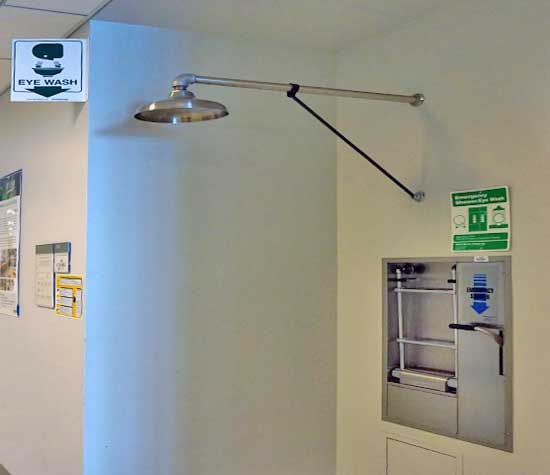
Exposure to Personnel
- If it is safe to do so, remove contaminated victim(s) from area
- Call 911 for immediate medical attention or if chemical release threatens others. (Refer to the Medical Assistance section on this page.)
- If necessary, activate the fire alarm, and evacuate the building
- Remove contaminated clothing and use emergency eyewash/shower
- Administer first aid as appropriate
- Notify EH&S at (805) 893-3194 (24 hr phone line)
- Provide information, including Safety Data Sheets (SDSs) to emergency responders
Contamination of Equipment/Facilities
- If a spill/release is a threat to health or safety, call 911
- Restrict access to avoid exposure and spread of contamination
- Perform cleanup only if the spill is less than 1 liter, you are familiar with the material, and you are properly trained and equipped. Some lab buildings have communal spill cleanup supply closets. EH&S can provide you with spill kit as well. If interested email hector.acuna@ucsb.edu.
- If needed, request cleanup assistance from EH&S at (805) 893-3194 (24 hr phone line). After business hours, a message will refer you to another phone number
- If material is radioactive or biological, see the Radioactive Contamination/Spills or Exposure to Blood or Other Potentially Infectious Materials sections on this page
- Bag the waste and use a UCSB Hazardous Waste label. Store waste in a fume hood if material is volatile. Call EH&S at (805) 893-7705 for pick up.
Release to the Environment (Air, Water, Soil)
- If safe to do so, stop the release
- If a spill/release is a threat to health or safety, call 911
- Notify EH&S at (805) 893-3194 (24 hr phone line)
- Follow procedures above for contamination of equipment/facilities.
Fire
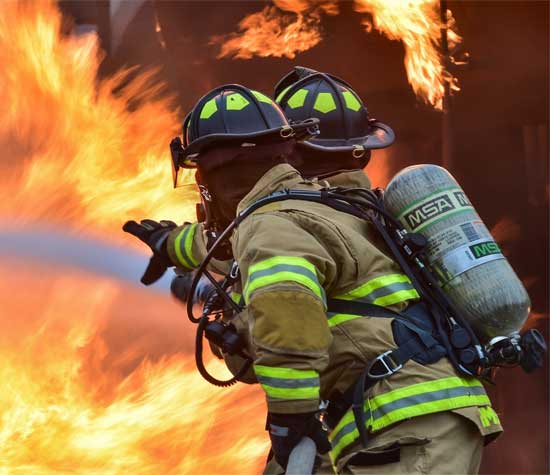
- Know the location of fire extinguishers in your area and know how to use them. Fire extinguisher training is available for departments by request at (805) 893-7751
- For a minor fire that appears to be controllable, activate the building fire alarm system at the nearest manual fire alarm pull box. Immediately call 911. Use the appropriate fire extinguisher to control the flames. Get help if necessary
- For a larger fire that is not easily controllable, close all doors to confine the fire and to reduce oxygen. Activate the building fire alarm system at the nearest manual fire alarm pull box, then immediately call 911. Give all information requested (your name, exact location, size and progress of the fire, etc.)
- Notify your supervisor or instructor, then evacuate the building by quickly walking to the nearest exit, alerting people as you go and assisting those with disabilities as necessary. Do not use elevators for evacuation
- Once outside, move to a clear area at least 50 feet away from the affected building. Keep the walkways and vehicle access lanes clear for emergency vehicles. Utilize the designated building Emergency Assembly Point if it is free of smoke, and wait for instructions
- DO NOT RETURN TO THE AFFECTED BUILDING UNTIL TOLD IT IS SAFE BY A FIRE OFFICIAL
- Report all fires, regardless of size to Campus Police at (805) 893-3446
- Report any fire extinguisher that has been discharged, has lost pressure, or is out-of-date to Physical Facilities- Life Safety Services at (805) 893-8300
Exposure to Blood or Other Potentially Infectious Materials
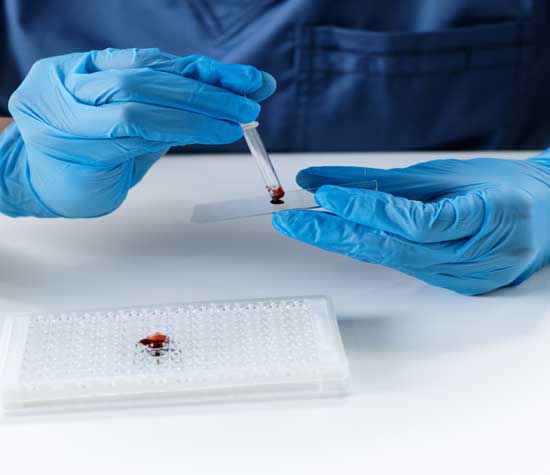
To prevent exposure:
- Post-doctoral researchers, graduate students, and undergraduates generating medical waste are required to attend bloodborne pathogens training annually
- Review and follow your lab’s Bloodborne Pathogens Exposure Control Plan
- Review and follow your lab’s Aerosol Transmittable Disease Biosafety and Exposure Control Plan
- Contact the EH&S Biosafety Officer for more information
If you are exposed to blood or other potentially infectious materials:
- Immediately wash area(s) with soap and water and use an emergency eyewash or shower for 15 minutes.
- Seek medical treatment.
- Healthcare providers treating accidental exposures must be informed of any biological materials that may be involved in the exposure.
- Report any unexpected acute illness to the institution.
- The hepatitis B vaccination series could begin right away to any susceptible, unvaccinated person preferably within 24 hours and no later than 7 days.
- Consider preserving a sample of the inoculum for later source testing for bloodborne pathogens.
- Notify your supervisor.
- Notify EH&S at (805) 893-3194 (24 hr phone line).
- Document the incident by filling out an Incident Report Form located at http://www.ehs.ucsb.edu/programs-services/workers-compensation.
Radioactive Contamination/Spills
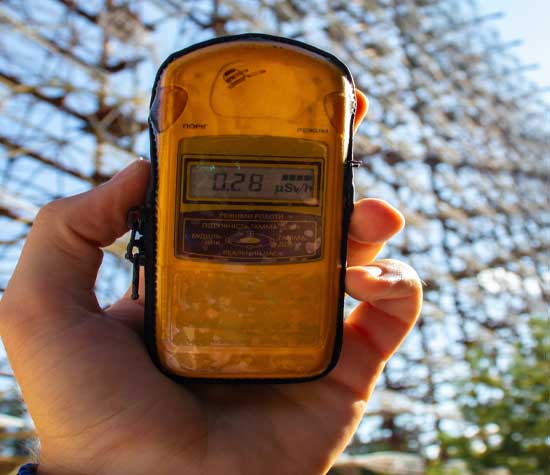
Call EH&S at (805) 893-3194 (24 hr phone line) for assistance.
- State that assistance is needed from EH&S Radiation Safety related to a radiation emergency
- State your name, phone number, location, and nature of the radiation emergency (personnel or area contamination)
Personnel Decontamination*
If a person has been contaminated with radioactive material:
- Immediately remove all contaminated items of clothing. Place contaminated items in a bag
- Wash contaminated skin with cold water and a mild soap
- If medical assistance is required, follow the guidance in the Medical Emergency section of this page
Containing the Spill/Room Evacuation*
- Notify people in the immediate area that a spill has occurred
- Confine/isolate the spill with absorbent paper or another suitable material
- If deemed appropriate, or if directed by EH&S, evacuate all people from the immediate area of the spill to a nearby location where they can be surveyed for contamination
- Close all doors to the contaminated room and post signs indicating the hazardous condition
- Limit the movement of contaminated people to reduce the spread of contamination
| Note |
| *Decontamination of personnel and areas must be performed by people who are properly trained and who are wearing appropriate protective clothing, including disposable gloves, a lab coat, long pants and fully enclosed shoes (e.g., no shorts or sandals). Persons performing decontamination must have radiation-monitoring equipment appropriate for the radiation emitted by the radionuclide involved in the spill. |
Requirements for First Aid and CPR Supplies
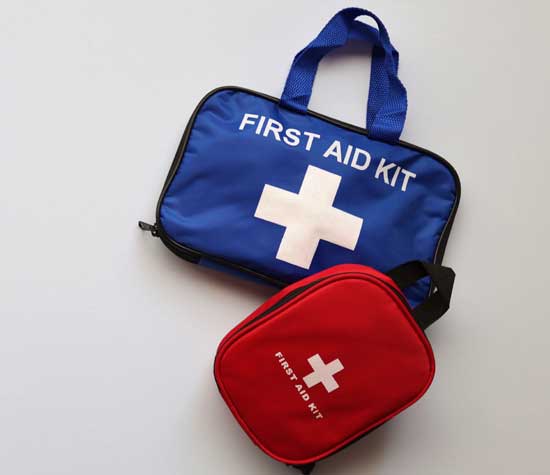
An adequate and readily available first aid kit is required in every workplace. These first aid kits must be compliant with ANSI Z308.1: Minimum Requirements for Workplace First Aid Kits.
These kits can be assembled by purchasing the individual components as described in the ANSI standard. Alternately, several vendors sell premade ANSI compliant kits. First Aid kits are also available at EH&S. If interested contact hector.acuna@ucsb.edu.
Other Information
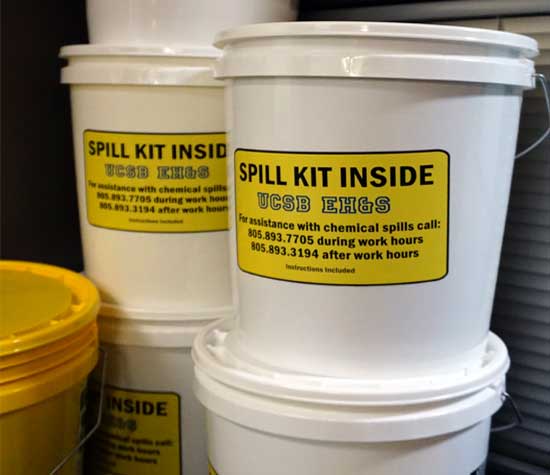
- Requirements for First Aid and CPR Supplies
- Chemical Spill Cleanup
- Seismic Safety